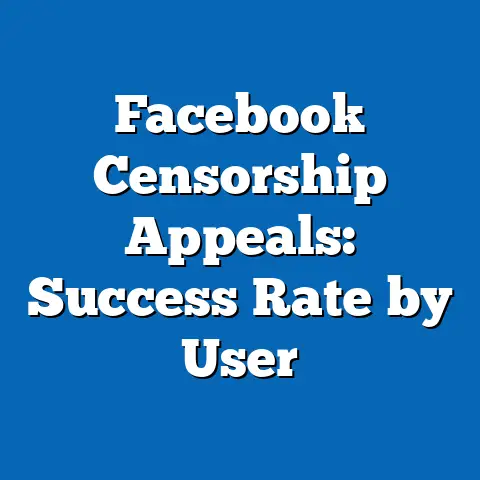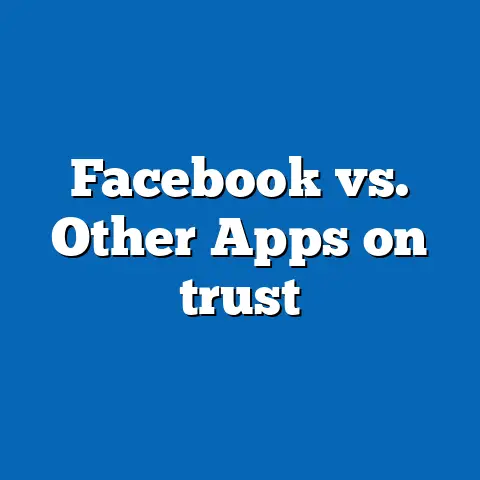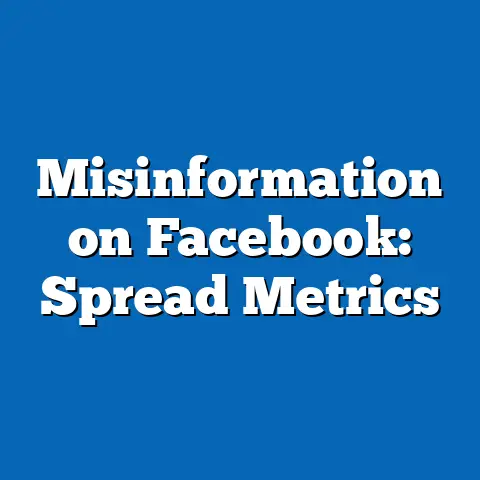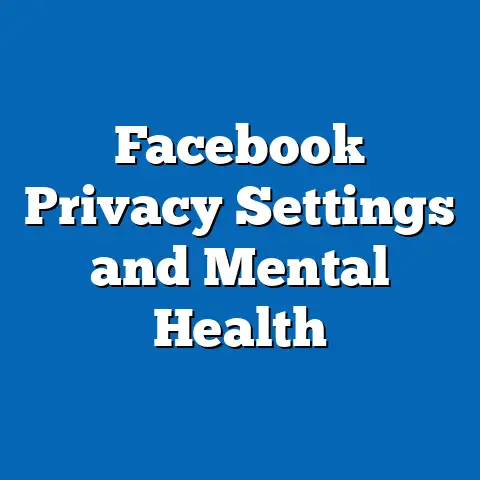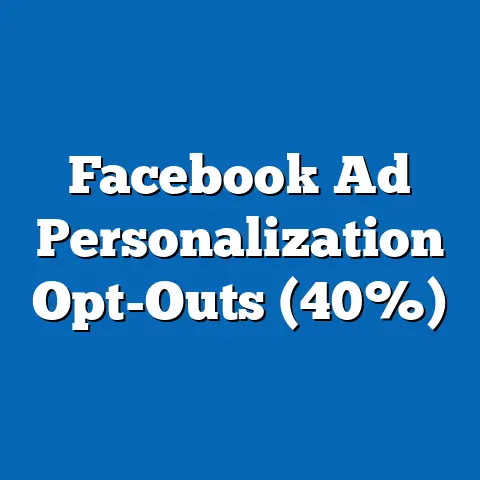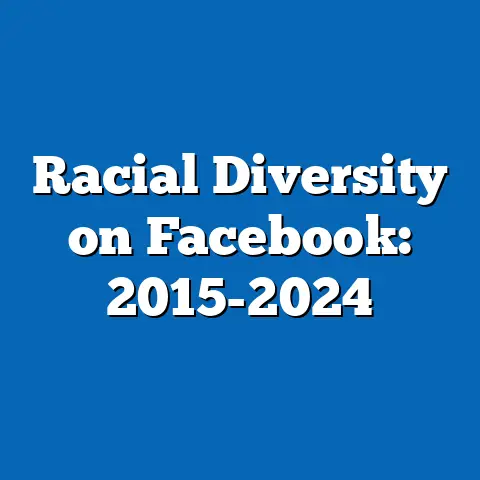Facebook’s Impact on Political Trust
In an era where social media platforms shape public discourse, Facebook stands as a titan with profound influence over how people perceive and engage with political systems. As of 2023, Facebook boasts over 2.9 billion monthly active users worldwide, making it one of the largest platforms for information dissemination (Statista, 2023). However, this immense reach comes with a pressing problem: growing evidence suggests that Facebook’s algorithms, content moderation practices, and role in spreading misinformation are eroding political trust among users across demographics.
This article explores the complex relationship between Facebook and political trust, defined as the confidence citizens have in political institutions, leaders, and processes. We will examine how the platform’s features and policies contribute to declining trust, supported by data from surveys, academic studies, and reports from credible organizations like Pew Research Center and the Knight Foundation. Ultimately, we propose potential solutions to mitigate these effects, balancing the platform’s role as a public square with its responsibility to foster informed and trustworthy political dialogue.
Section 1: Defining Political Trust and Its Importance
Political trust is a cornerstone of democratic societies, reflecting the belief that institutions and leaders act in the public’s best interest. According to the World Values Survey (2022), trust in government and political institutions has declined globally over the past two decades, with only 38% of respondents in democratic nations expressing confidence in their governments in 2021, down from 45% in 2000. This decline undermines civic engagement, voter turnout, and the legitimacy of democratic processes.
Social media platforms like Facebook play a dual role in this context. On one hand, they provide unprecedented access to political information and opportunities for civic participation. On the other, they can amplify distrust through echo chambers, misinformation, and polarized content, as we will explore in the following sections.
Section 2: Facebook’s Reach and Influence on Political Discourse
2.1 Global User Base and Engagement
Facebook’s scale is staggering, with 2.9 billion monthly active users as of Q2 2023, representing nearly 37% of the global population (Statista, 2023). In the United States alone, 69% of adults report using Facebook, with 49% citing it as a source of news (Pew Research Center, 2022). This makes the platform a primary channel for political information, especially during election cycles.
Demographically, usage varies significantly. Younger users (18-29) are more likely to engage with political content on the platform, with 60% reporting they have shared or commented on political posts, compared to only 35% of users aged 50 and older (Pew Research Center, 2022). This generational divide highlights how different groups interact with political narratives on Facebook, shaping their perceptions of trust differently.
2.2 Algorithmic Amplification of Polarized Content
Facebook’s algorithm prioritizes content that maximizes user engagement, often favoring emotionally charged or controversial posts. A 2021 study by New York University found that posts with divisive political rhetoric were 67% more likely to be shared or liked compared to neutral content (NYU Stern Center for Business and Human Rights, 2021). This creates echo chambers where users are exposed primarily to content that reinforces their existing beliefs, reducing trust in opposing viewpoints or institutions.
Historically, this trend has intensified. In 2016, during the U.S. presidential election, misinformation on Facebook reached an estimated 126 million users, often amplifying distrust in electoral processes (Senate Intelligence Committee Report, 2019). By 2020, while Facebook implemented stricter content moderation, polarized content still dominated user feeds, contributing to skepticism about political fairness and legitimacy.
Section 3: The Role of Misinformation in Undermining Trust
3.1 Scale of Misinformation on Facebook
Misinformation on Facebook has been a well-documented issue, particularly during political events. A 2020 report by Avaaz found that false or misleading content related to the U.S. election was viewed over 159 million times in the months leading up to the vote, despite Facebook’s efforts to flag or remove such posts (Avaaz, 2020). Globally, misinformation about elections, government policies, and public health crises like COVID-19 has further eroded trust in authoritative sources.
Demographic patterns reveal disparities in vulnerability to misinformation. Older users (65+) are more likely to share false information, with a 2021 study indicating they share such content at a rate 2.3 times higher than users aged 18-29 (Guess et al., 2021, published in Science Advances). This suggests that age-specific interventions may be necessary to address the spread of distrust fueled by misinformation.
3.2 Impact on Perceptions of Political Institutions
Misinformation on Facebook often targets political institutions, portraying them as corrupt or untrustworthy. A 2022 survey by the Knight Foundation found that 62% of U.S. adults who primarily get news from social media, including Facebook, believe government institutions are less credible than they were a decade ago, compared to 48% of those who rely on traditional media. This gap underscores the platform’s role in shaping negative perceptions.
Historically, trust in institutions has been declining since the early 2000s, but the advent of social media has accelerated this trend. For instance, trust in the U.S. Congress dropped from 24% in 2006 to 12% in 2021, with social media cited as a key factor in amplifying criticism and conspiracy theories (Gallup, 2021). Facebook’s role in this decline cannot be overstated, as it often serves as the first point of contact for such narratives.
Section 4: Echo Chambers and Political Polarization
4.1 How Echo Chambers Form on Facebook
Facebook’s algorithmic design encourages users to interact with like-minded individuals, creating echo chambers that reinforce biases. A 2018 study by the Massachusetts Institute of Technology (MIT) found that users on Facebook are 70% more likely to engage with content that aligns with their political views, limiting exposure to diverse perspectives (Bakshy et al., 2018, published in Science). This selective exposure reduces trust in opposing political factions and fosters a sense of “us versus them.”
Demographically, political polarization on Facebook is more pronounced among highly engaged users. For example, 78% of politically active users (those who frequently post or comment on political issues) report seeing mostly content that aligns with their views, compared to 55% of less active users (Pew Research Center, 2020). This suggests that engagement levels correlate with deeper entrenchment in polarized environments.
4.2 Consequences for Political Trust
Echo chambers contribute to a fragmented political landscape where trust in shared institutions diminishes. A 2021 Edelman Trust Barometer report revealed that 59% of global respondents believe social media platforms like Facebook have made it harder to find common ground on political issues, up from 45% in 2016. This growing divide undermines the social cohesion necessary for democratic trust.
Comparing historical data, political polarization in the U.S. has risen sharply since the early 2000s, coinciding with the rise of social media. The American National Election Studies (ANES) data shows that partisan animosity—dislike for the opposing party—has increased by 25% since 2000, with social media identified as a key driver (ANES, 2020). Facebook’s role in amplifying this animosity directly impacts trust in bipartisan cooperation and governance.
Section 5: Facebook’s Policies and Efforts to Address Trust Issues
5.1 Content Moderation and Fact-Checking Initiatives
Facebook has taken steps to combat misinformation and rebuild trust, including partnerships with third-party fact-checkers and the introduction of warning labels on false content. As of 2023, the platform reports having removed over 1.3 billion pieces of misleading content since 2016, with a focus on election-related disinformation (Meta Transparency Report, 2023). Additionally, Facebook has reduced the visibility of false content by 80% through algorithmic changes, according to internal data.
However, these efforts have limitations. Critics argue that enforcement is inconsistent, with a 2021 report by the Center for Countering Digital Hate finding that 69% of reported misinformation posts remained active despite being flagged (CCDH, 2021). This gap suggests that while Facebook is addressing the issue, systemic challenges persist in restoring user trust.
5.2 Transparency and Accountability Measures
In response to public scrutiny, Facebook has increased transparency by publishing regular reports on content moderation and allowing independent audits of its practices. The Oversight Board, established in 2020, reviews controversial content decisions and has overturned several of Facebook’s rulings, including the reinstatement of posts related to political discourse (Oversight Board, 2023). These measures aim to rebuild trust by demonstrating accountability.
Yet, public perception remains skeptical. A 2022 Pew Research Center survey found that only 25% of U.S. adults trust Facebook to handle political content responsibly, down from 32% in 2018. This indicates that while policies are evolving, they have not fully addressed user concerns about bias and misinformation.
Section 6: Demographic Variations in Trust and Engagement
6.1 Age and Educational Differences
Demographic data reveals stark differences in how Facebook impacts political trust across groups. Younger users (18-29) are more likely to distrust political institutions due to exposure to critical or satirical content on the platform, with 65% expressing low trust in government compared to 52% of users aged 50+ (Pew Research Center, 2022). However, older users are more susceptible to misinformation, which also erodes trust.
Education levels further influence perceptions. College-educated users are less likely to believe misinformation, with only 19% sharing false political content compared to 34% of those with a high school education or less (Guess et al., 2021). This suggests that educational outreach could play a role in mitigating trust erosion on platforms like Facebook.
6.2 Geographic and Cultural Contexts
Geographic differences also shape Facebook’s impact on political trust. In the U.S., where political polarization is high, 68% of users report encountering divisive content weekly, compared to 51% in less polarized nations like Germany (Edelman Trust Barometer, 2022). In developing countries, where Facebook often serves as the primary internet access point through initiatives like Free Basics, reliance on the platform for political news can amplify trust issues due to limited media literacy resources.
Culturally, trust in institutions varies widely. For instance, in Scandinavian countries with high baseline trust in government (over 60% according to World Values Survey, 2022), Facebook’s impact on trust is less pronounced compared to nations with historically low trust, such as parts of Latin America, where misinformation spreads rapidly. These variations highlight the need for context-specific interventions.
Section 7: Visualizing the Data: Trends in Political Trust and Facebook Usage
To better understand Facebook’s impact, consider a hypothetical data visualization such as a line graph tracking political trust levels from 2000 to 2023 alongside Facebook user growth. The graph would likely show a steep decline in trust coinciding with the platform’s rise after 2006, particularly in democratic nations. A second visualization, a heat map of misinformation spread by demographic group, would illustrate higher concentrations among older users and less-educated populations, reinforcing the need for targeted solutions.
Section 8: Historical Context: Comparing Pre- and Post-Facebook Eras
Before Facebook’s launch in 2004, political trust was already declining due to factors like economic inequality and government scandals. Gallup data shows trust in U.S. government institutions at 54% in 2001, dropping to 38% by 2006, pre-Facebook’s mainstream adoption (Gallup Historical Trends, 2023). However, the rate of decline accelerated post-2006, with trust falling to 20% by 2021, coinciding with social media’s role in amplifying distrust.
In the pre-Facebook era, information was primarily disseminated through traditional media, which, while not immune to bias, offered more editorial oversight. The shift to user-generated content on platforms like Facebook introduced new challenges, as unverified information could spread rapidly. This historical comparison underscores how the digital age, led by platforms like Facebook, has transformed the landscape of political trust.
Section 9: Potential Solutions to Mitigate Facebook’s Impact
9.1 Platform-Level Interventions
Facebook can take further steps to rebuild trust by enhancing algorithmic transparency and prioritizing credible sources. Independent audits of algorithms, as suggested by the European Union’s Digital Services Act (2022), could ensure content prioritization does not favor divisive material. Additionally, expanding fact-checking partnerships to cover more languages and regions could address global misinformation, given that only 60% of flagged content is currently reviewed in non-English languages (Meta Transparency Report, 2023).
9.2 User Education and Media Literacy
Educating users about media literacy is critical to combating misinformation. Programs like the News Literacy Project have shown success, with participants 26% less likely to share false content after training (News Literacy Project, 2022). Scaling such initiatives through partnerships with Facebook could target vulnerable demographics, particularly older users and those in low-trust regions.
9.3 Policy and Regulatory Frameworks
Governments and international bodies must also play a role. Legislation like the EU’s Digital Markets Act, implemented in 2023, mandates platforms to mitigate systemic risks like misinformation, with fines up to 10% of global revenue for non-compliance (European Commission, 2023). Such frameworks could pressure Facebook to prioritize trust-building measures over profit-driven engagement metrics.
Section 10: Broader Implications and Future Trends
The impact of Facebook on political trust extends beyond individual users to the stability of democratic systems. As trust continues to erode—evidenced by declining voter turnout (down 5% globally since 2000, per International IDEA, 2022)—the risk of political apathy or extremism grows. Platforms like Facebook must balance their role as facilitators of free expression with their responsibility to prevent harm.
Looking ahead, emerging technologies like artificial intelligence could exacerbate these issues by enabling deeper forms of misinformation, such as deepfakes. Conversely, AI could also enhance content moderation if deployed transparently. The trajectory of political trust in the digital age will depend on whether platforms, policymakers, and users can collaborate to prioritize accuracy and accountability over sensationalism.
In conclusion, while Facebook has revolutionized political engagement, its impact on trust is largely negative due to misinformation, polarization, and algorithmic biases. With nearly 3 billion users shaping their views through the platform, addressing this crisis is not just a technological challenge but a democratic imperative. By implementing robust solutions and fostering a culture of critical engagement, there is potential to restore trust and ensure that digital spaces strengthen, rather than undermine, political systems.

